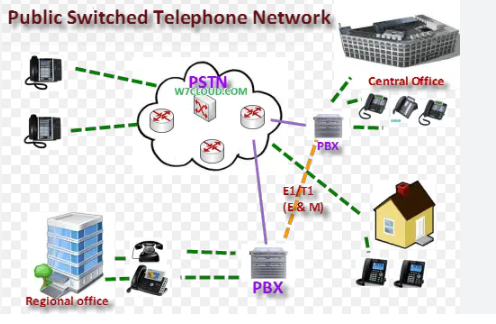Understanding PSTN: The Backbone of Traditional Telecommunications
Introduction
In the digital age, where communication is predominantly dominated by internet-based technologies, it’s easy to overlook the significance of the Public Switched Telephone Network (PSTN). However, despite the rise of Voice over Internet Protocol (VoIP) and mobile networks, PSTN remains an essential component of global telecommunications infrastructure. In this blog post, we will delve into the world of PSTN, exploring its definition, historical context, architecture, and its role in modern communication systems.

What is PSTN?
The Public Switched Telephone Network, commonly known as PSTN, is a global telecommunications network that facilitates the transmission of voice and analog data over copper wires or fiber optic cables. It is the traditional and widely-used infrastructure for landline telephony. It is a circuit-switched network, meaning that it establishes a dedicated physical connection between two communicating parties for the duration of a call.
- Historical Context
PSTN traces its roots back to the late 19th century when Alexander Graham Bell invented the telephone, revolutionizing long-distance communication. Initially, telephone calls were manually connected by operators, but with technological advancements, automated switching systems were introduced. These switches formed the foundation of the early PSTN, allowing calls to be routed across various exchanges and connecting subscribers globally.
- Architecture of PSTN
The architecture of PSTN consists of several key components. At its core are central offices or exchanges, which serve as the main switching centers. These exchanges are interconnected through trunk lines, forming a vast network. When a call is made, the originating exchange establishes a connection to the destination exchange via the trunk lines, enabling direct communication between the two parties.
Subscriber lines connect end-user devices, such as telephones or fax machines, to the nearest central office. These lines utilize copper wires or, in modern deployments, fiber optic cables for enhanced data transmission. Analog signals generated by the user’s device are converted into digital signals by analog-to-digital converters within the central office and transmitted over the network.
It also incorporates signaling systems for call setup, routing, and control. The most widely used signaling protocol is Signaling System 7 (SS7), which enables the exchange of information between central offices for call establishment, billing, and supplementary services.
- Role of PSTN in Modern Communication
Despite the rise of digital communication technologies, PSTN continues to play a vital role in modern telephony. It provides several advantages, including reliability, widespread coverage, and compatibility with legacy devices. In remote areas or during emergencies, where internet connectivity may be limited or disrupted, PSTN ensures that voice communication remains accessible.
PSTN is also crucial for critical infrastructure, such as emergency services, alarm systems, and credit card payment processing, which often rely on landline connectivity. Additionally, many organizations, including businesses and government agencies, still rely on PSTN for their voice communication needs due to its stability and security.
Moreover, PSTN serves as a bridge between traditional telephony and modern digital networks. With the advent of Voice over IP (VoIP) technology, PSTN has evolved to incorporate IP-based protocols, allowing for the integration of traditional telephony services with internet-based communication platforms. This convergence has paved the way for enhanced features like unified communications, where voice, video, and messaging services are seamlessly integrated.
Conclusion
While the dominance of digital communication technologies continues to grow, the Public Switched Telephone Network (PSTN) remains a crucial backbone of traditional telecommunications. Its historical significance, robust architecture, and compatibility with legacy devices make it an integral part of the global communication infrastructure. Despite the rapid evolution of communication technologies, PSTN’s resilience, reliability, and ubiquitous coverage ensure that voice communication remains accessible, particularly in remote areas and during emergencies. Furthermore, its integration with IP-based protocols enables seamless connectivity between traditional telephony and modern digital networks, facilitating the transition towards more advanced and feature-rich communication systems. As we move forward, it is important to appreciate the role of PSTN in the broader landscape of telecommunications and acknowledge its continued relevance in an increasingly connected world.
